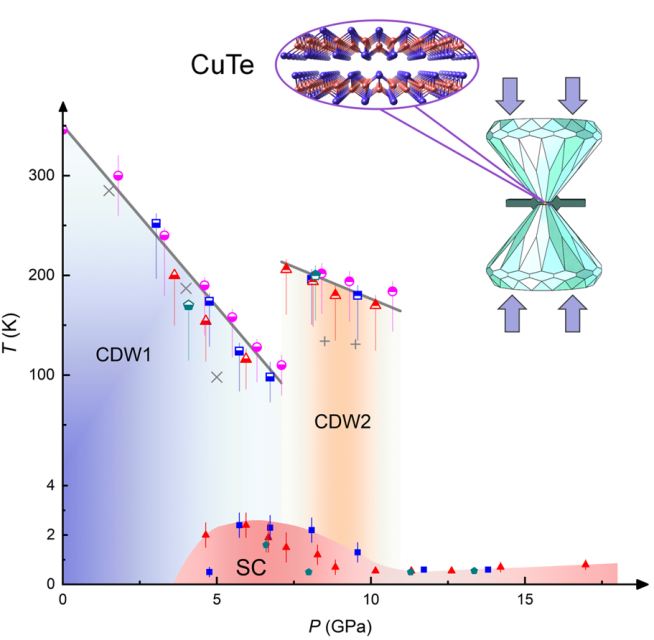
According to a work recently published in Matter, a collaborated team led by Prof. YANG Zhaorong and Prof. HAO Ning from High Magnetic Field Laboratory, Hefei Institutes of Physical Science (HFIPS) of Chinese Academy of Sciences (CAS), found that quasi-one-dimensional charge density wave (CDW) material CuTe under high pressure was a rare and promising platform for studying multiple CDW orders and superconductivity (SC).
The interplay between SC and CDW has always been one of the central topics in the research of condensed matter physics. While generally theory predicts that they compete with each other, in practical materials SC and CDW can manifest complex relationships under external stimuli. Also recent researches in the superconducting cuprates and the kagome CsV3Sb5, SC was found to be interacting with multiple CDW orders. Nevertheless, in the above two systems, there are some other quantum orders in the phase diagrams, hampering good understanding of the interplay between SC and multiple CDWs.
In this research, the team showed solid evidence for a second CDW order in the quasi-one-dimensional CDW material CuTe under high pressure. Moreover, they found that SC can be induced and it has intricate relations to the pristine and emergent CDW orders.
Based on their previous research, the team used ultralow-temperature electrical transport and temperature-dependent Raman spectroscopy measurements to study the physical properties of CuTe under pressure. They found that application of pressure can effectively suppress the pristine CDW order (CDW1) and induce SC initially around 4 GPa. The CDW1 state underwent a transformation into a new CDW state (CDW2) at about 6.5 GPa, and the transition temperature of CDW2 was significantly higher than that of CDW1.
Accompanied by the transition from CDW1 to CDW2, a pressure-induced dome-like superconducting phase diagram appeared and exhibited abnormal superconducting broadening. Further theoretical calculations revealed that the CDW1 originated from the Fermi surface nesting effect, while the CDW2 was driven by the electronic correlated interaction.
"Compared with pressurized CsV3Sb5 where similar physics of SC and multiple CDWs, CuTe with a clean and simple binary compound highlights its potential as an ideal platform for studying the interplay between the SC and multiple CDWs," said WANG Shuyang, a member of the team.
This work was supported by National Key R&D Program of China and the National Natural Science Foundation of China.

Temperature-pressure phase diagrams of CuTe (Image by WANG Shuyang)